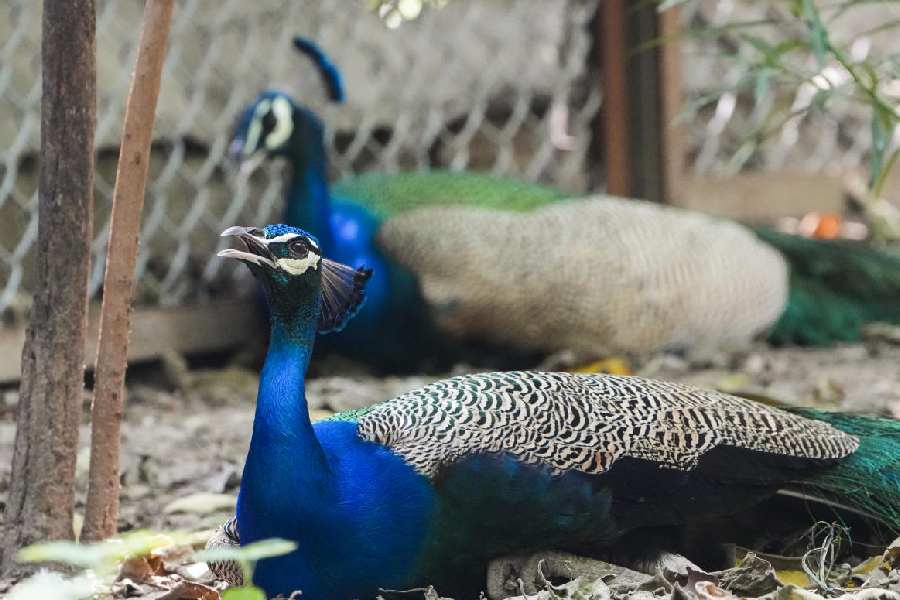 |
| Birds in the Kulik sanctuary in North Dinajpur. File picture |
Bolstered by the rise in the number of birds at Kulik Bird Sanctuary in Raiganj, the forest department has decided to take steps for improvement in safety and the environment to draw more winged creatures.
The number of birds that arrive here just before the advent of the monsoons has been on the rise since 2006, according to figures available at the forest divisional office in Raiganj.
Each rainy season, hundreds of waterfowl, mainly Asian openbill storks, night herons and cormorants flock to the sanctuary to nest. They leave a few weeks after the monsoon when their chicks have grown.
According to figures of the census conducted by forest officials and NGOs, there were 63,000 in 2006, 71,000 in 2007, 91,000 in 2008 and over a lakh in 2009. However, in 2009, hundreds of birds were killed when a storm hit the sanctuary in October.
Forest department officials said over 4,000 adult birds and fledglings were killed. The arrival of birds in 2010 was down to 45,000.
The forest department contacted Gopinath Maheswaran, an ornithologist with the Zoological Survey of India, who visited Kulik in December 2010. He asked the foresters to reduce noise pollution in the area and also to dig more ponds for the birds to feed on snails, fish and small reptiles.
 |
The number of birds went up to 68,000 in 2011, though in 2012 it declined to 61,000.
Divisional forest officer Diparna Kumar Dutta, however, said the numbers had gone up by 4,000 this year.
“We were worried as the numbers had once again declined last year, but there is encouragement that it has gone up to 65,000 this year. This year we had formed seven teams with the help of local NGOs and counted 65,311 birds, mostly openbill storks, night herons and cormorants,” Dutta said.
Dutta said that 44,298 Asian openbill storks, 7,325 night herons, 6,192 cormorants and 7,496 little egrets had arrived this year.
“The Asian openbills are widely distributed and are found also in Pakistan, Afghanistan and Myanmar, but we have no records where the migrants come from. They and the other species nest during the rainy season and begin to leave with their full-grown chicks as the winter sets in. Some leave as late as early January,” he said.
The sanctuary is of international importance. It is estimated to support 32 per cent to 40 per cent of the existing population of Asian open-bills.
Dutta said steps were being taken to dig more existing waterbodies so that birds get more food.
“We have also formed an eco-development committee with the residents of Bhattadighi, Abdulaghata and Soharoi. They have been keeping a vigil on the sanctuary.” The committee keeps a check on the stealing of branches and the use of loudspeakers by picnickers.
“We hand over 25 per cent of the entry fees to the committee so that it can be used for development projects. We also pay a token amount to the youth who keep the watch,” the DFO said.
 |
The entry fee for an individual ais s 40; video cameras are charged Rs 200 and still cameras Rs 100.
Ramjatan Barman, a resident of Abdulghata, and a member of the eco-development committee, said the committee had come as a help for the villagers. “The people of the villages have gained by selling food and snacks to the visitors during the season and we keep vigil by turns. We are in favour of preserving the sanctuary in our own interests.”










